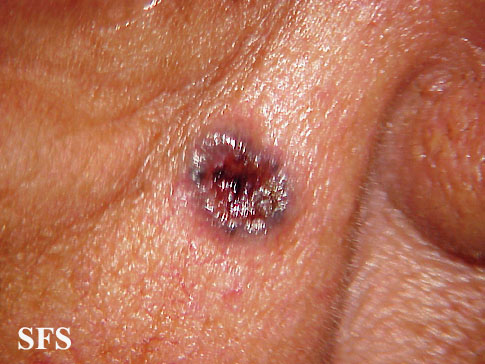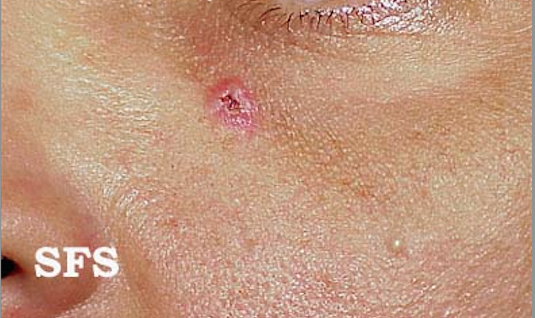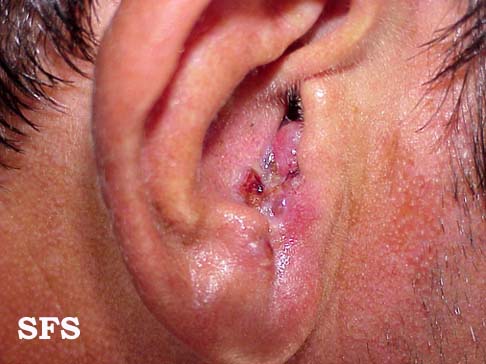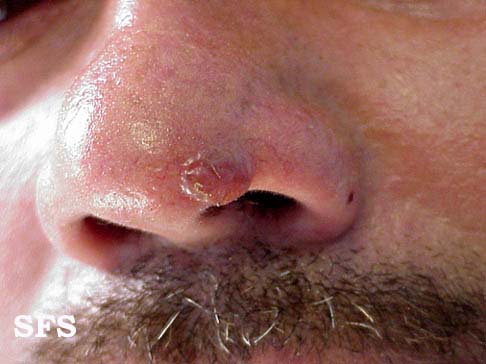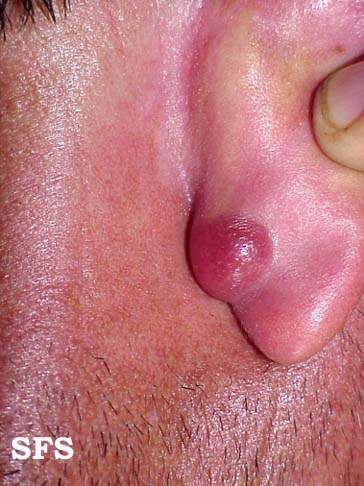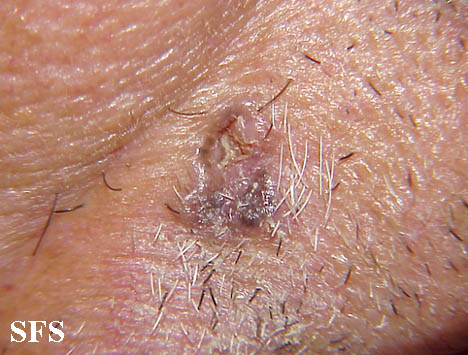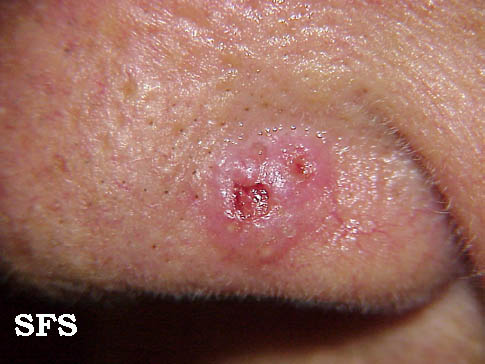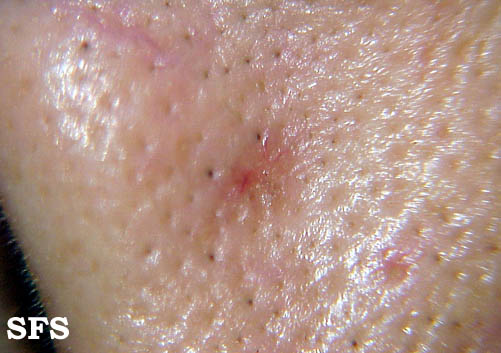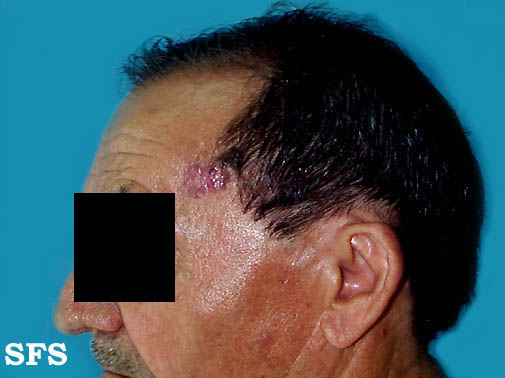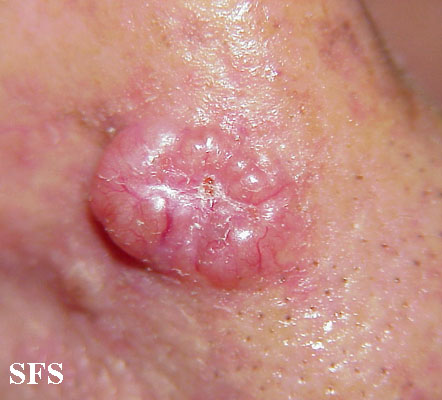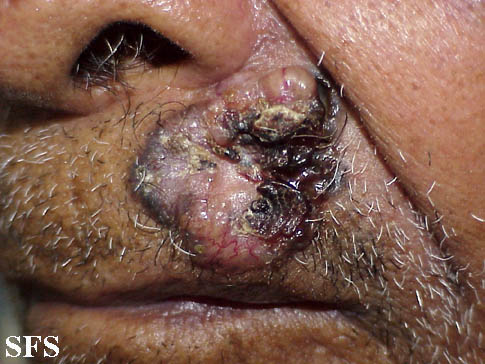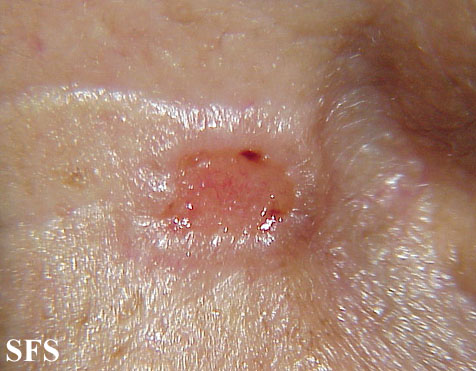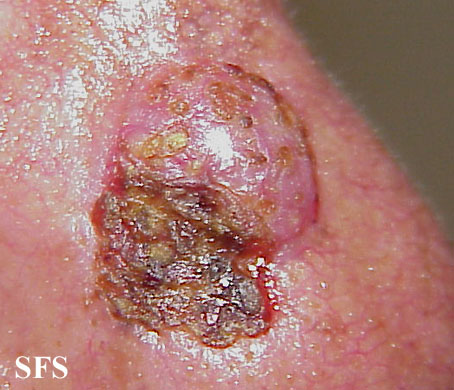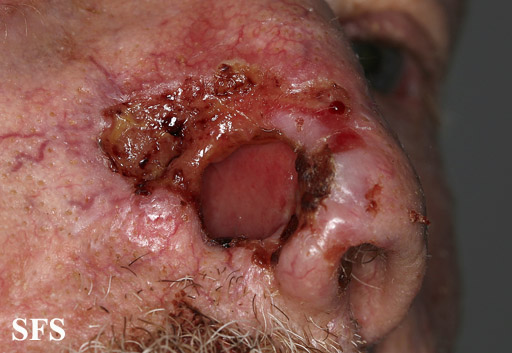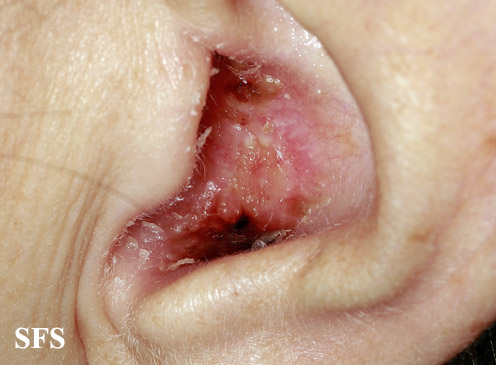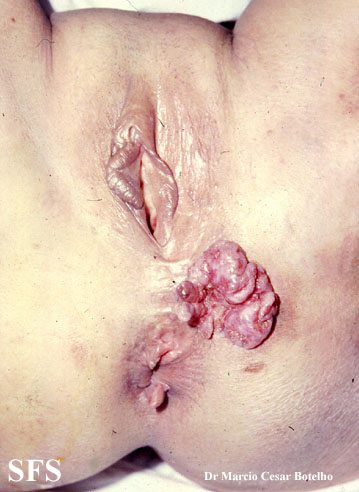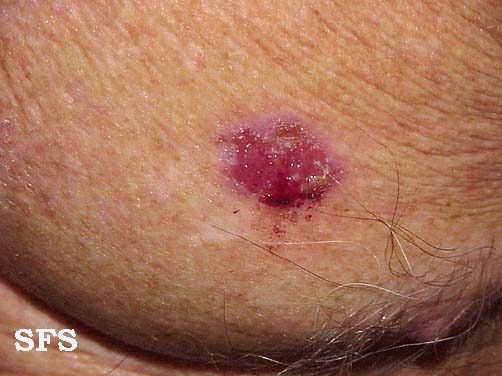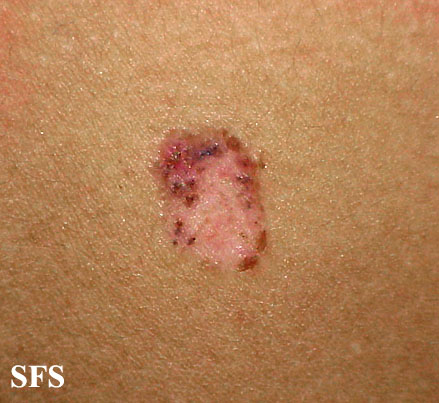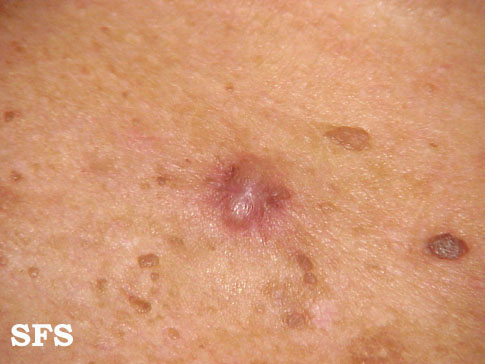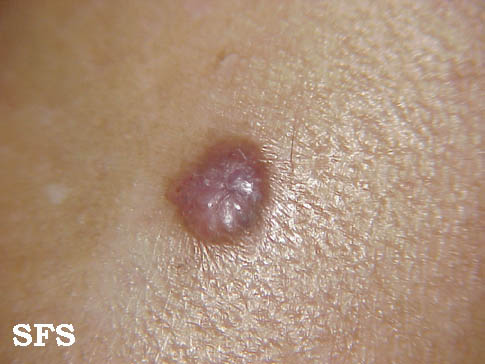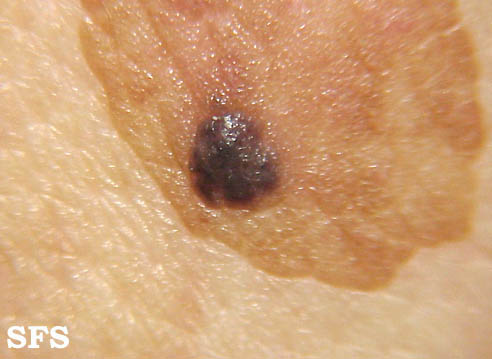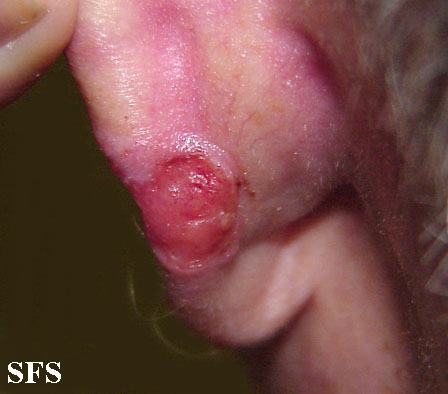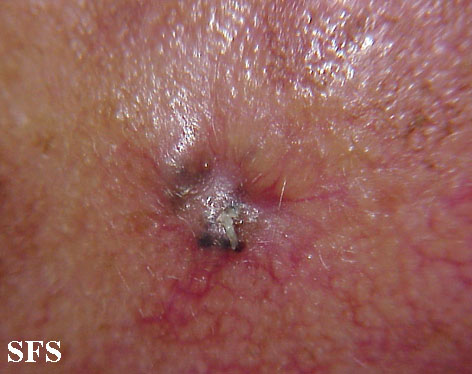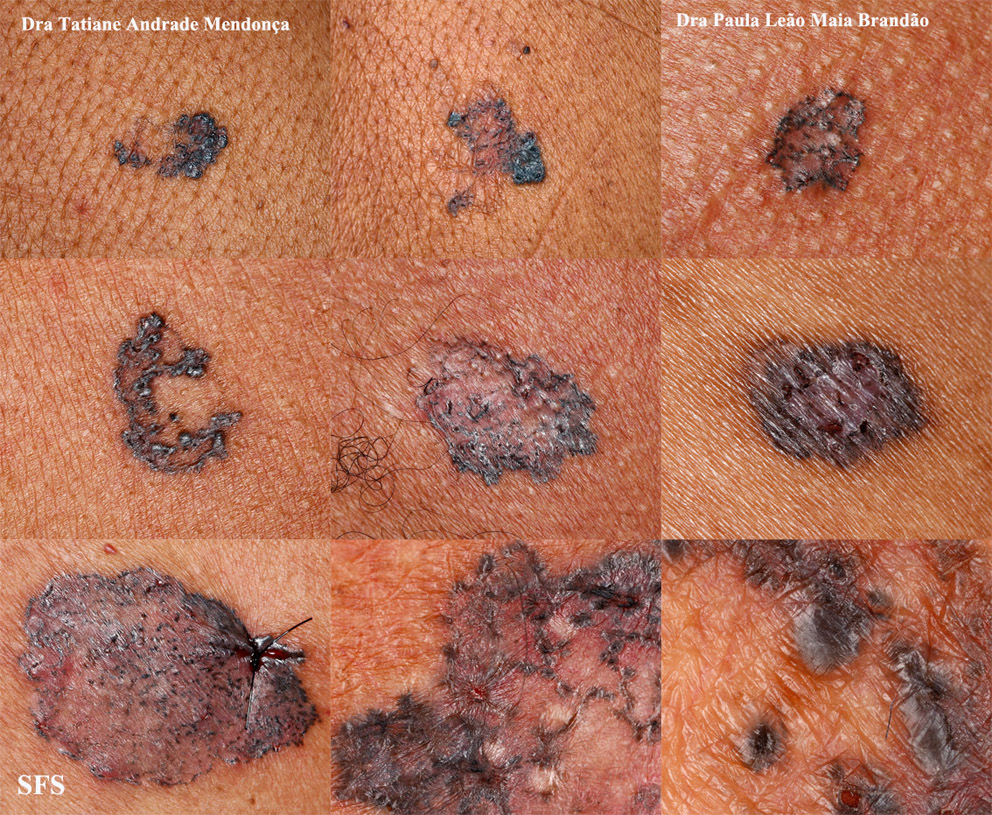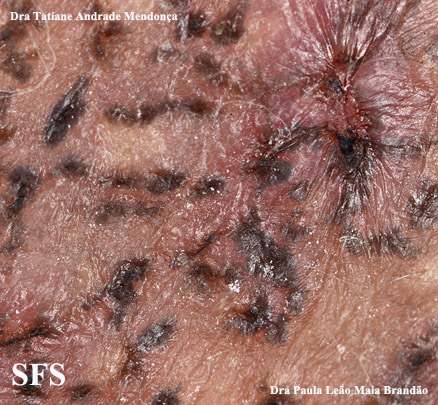Basal cell carcinoma physical examination: Difference between revisions
(→HEENT) |
|||
| Line 232: | Line 232: | ||
===Neuromuscular=== | ===Neuromuscular=== | ||
* Neuromuscular examination of patients with | * Neuromuscular examination of patients with basal cell carcinoma is usually normal. | ||
===Extremities=== | ===Extremities=== | ||
Revision as of 14:38, 25 February 2019
|
Basal cell carcinoma Microchapters |
|
Diagnosis |
|---|
|
Case Studies |
|
Basal cell carcinoma physical examination On the Web |
|
American Roentgen Ray Society Images of Basal cell carcinoma physical examination |
|
Risk calculators and risk factors for Basal cell carcinoma physical examination |
Editor-In-Chief: C. Michael Gibson, M.S., M.D. [1]; Associate Editor(s)-in-Chief: Jesus Rosario Hernandez, M.D. [2]
Overview
The physical examination of basal cell carcinoma is based on a clinical exam.
_NOTOC_
Physical Examination
The physical examination of basal cell carcinoma is based on a clinical exam.
Face
-
Basal cell carcinoma.
-
Basal cell carcinoma.
-
Basal cell carcinoma.
-
Basal cell carcinoma.
-
Basal cell carcinoma.
-
Basal cell carcinoma.
-
Basal cell carcinoma.
-
Basal cell carcinoma.
-
Basal cell carcinoma.
-
Basal cell carcinoma.
-
Basal cell carcinoma.
-
Basal cell carcinoma.
-
Basal cell carcinoma.
Neck
Extremities
-
Basal cell carcinoma.
Perineal area
-
Basal cell carcinoma.
Skin
-
Basal cell carcinoma.
-
Basal cell carcinoma.
-
Basal cell carcinoma.
-
Basal cell carcinoma.
-
Basal cell carcinoma.
-
Basal cell carcinoma.
-
Basal cell carcinoma.
Overview
Patients with basal cell carcinoma usually have normal general appearance.
Physical Examination
Physical examination of patients with [disease name] is usually normal.
OR
Physical examination of patients with [disease name] is usually remarkable for [finding 1], [finding 2], and [finding 3].
OR
The presence of [finding(s)] on physical examination is diagnostic of [disease name].
OR
The presence of [finding(s)] on physical examination is highly suggestive of [disease name].
Appearance of the Patient
- Patients with [disease name] usually appear [general appearance].
Vital Signs
- Vital signs of patients with basal cell carcinoma are usually within normal limits
Skin
- Skin examination of patients with [disease name] is usually normal.
OR
-
Description (Adapted from Dermatology Atlas)
-
Description (Adapted from Dermatology Atlas)
HEENT
- HEENT examination of patients with basal cell carcinoma is usually normal.
Neck
- Neck examination of patients with basal cell carcinoma is usually normal
Lungs
- Pulmonary examination of patients with basal cell carcinoma is usually normal.
Heart
- Cardiovascular examination of patients with basal cell carcinoma is usually normal.
Abdomen
- Abdominal examination of patients with basal cell carcinoma is usually normal.
Back
- Back examination of patients with basal cell carcinoma is usually normal.
Genitourinary
- Genitourinary examination of patients with basal cell carcinoma is usually normal.
Neuromuscular
- Neuromuscular examination of patients with basal cell carcinoma is usually normal.
Extremities
- Extremities examination of patients with basal cell carcinoma is usually normal.
